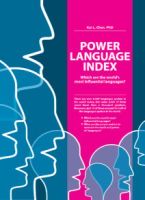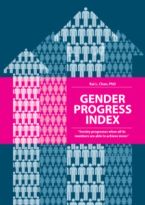
The 10 Best Languages for Business
Savvy business owners understand that there is a multitude of opportunities in targeting foreign audiences. After all, native English speakers only make up 4.9% of the global population.
But translation strategy is more than producing your content in various languages and sending it out to the world in hopes of attracting new audiences.
A plan for prioritizing the languages you target will lead to quicker returns and better efficiency.
First, if your research shows that you have a strong demand in specific locales but haven’t yet translated your content for them, then you have some low hanging fruit to pick.
But what if you’re launching a new product or you’re already established your in primary foreign markets and aren’t sure where to target next?
In this post, we’ll provide the ten best languages for business and why you should consider targeting them for translation.
The Most Useful Languages for Business
When researching which languages to target, a common approach is to focus on the world’s most popular languages. While this is a good starting point, it fails to consider cultural and diplomatic factors that directly correlate with the translation ROI of a language.
Dr. Kai Chan of INSEAD has published a report that tackles this very issue. Using the World Economic Forum’s Global Competitiveness Report, he found a correlation between the most influential languages and the most competitive countries.
From this research, the power language index (PLI) was born—a ranking of 124 languages by global influence and a valuable resource for businesses that want to get the biggest return on their investment. (See more on the report here).
Ranked by order of global influence, here are the 10 best languages for business:
- English
- Chinese
- French
- Spanish
- Arabic
- Russian
- German
- Japanese
- Portuguese
- Hindi
Language Profitability vs. Language Popularity
It’s interesting to note that some of the world’s most popular languages are not the world’s most influential languages.
Both multinational business and foreign language learners focus on the languages that provide the highest return on investment (ROI).
Here’s a pie chart of the world’s most popular languages by the number of native speakers:
[INSERT PICTURE]
Note that although English is the most influential language, it is the third most spoken language. French and German didn’t even make the top 10 although they are within the top 5 most influential languages.
Translation ROI
When targeting foreign markets, your translation ROI is going to depend significantly on how much demand a language’s speakers will have for your product.
But ease of market entry is equally essential in translation strategy and is greatly influenced by the cultural, geographical, and diplomatic facets of the countries where those languages are spoken.
Dr. Chan calculates language influence not only by their number of speakers but also by geography, economy, communication, knowledge, and diplomacy—significant influencers of the usefulness of a language.
He puts it this way:
“To understand the efficacy of language (and by extension culture), consider the doors (“opportunities”) opened by it. Broadly speaking, there are five opportunities provided by language.”
1. Geography: The ability to travel
2. Economy: The ability to participate in an economy
3. Communication: The ability to engage in dialogue
4. Knowledge and media: The ability to consume knowledge and media
5. Diplomacy: The ability to engage in international relations
In the context of business, these five factors correlate directly with language profitability or translation ROI.
Dr. Chan says:
“For business leaders, the PLI gives clues as to the most important languages to implement for a global audience. For instance, what tongues should be prioritized when setting up hotlines, creating websites and translating business materials?”
We’ve expounded upon the PLI index below, using updated populations from Ethnologue. The PLI assigns scores to each language as well as a global ranking for each category.
The World’s Most Powerful Languages
English
Score: 0.889
Native Speakers: 379 million
Geography: 1
Economy: 1
Communication: 1
Knowledge & Media: 1
Diplomacy: 1
Mandarin
Native Speakers: 918 million
Geography: 6
Economy: 2
Communication: 2
Knowledge & Media: 3
Diplomacy: 6
French
Native Speakers: 77.2 million
Geography: 2
Economy: 6
Communication: 5
Knowledge & Media: 5
Diplomacy: 1
Spanish
Native Speakers: 460 million
Geography: 3
Economy: 5
Communication: 3
Knowledge & Media: 7
Diplomacy:
Arabic
Native Speakers: 319 million
Geography: 4
Economy: 9
Communication: 6
Knowledge & Media: 18
Diplomacy: 4
Russian
Native Speakers: 154 million
Geography: 5
Economy: 12
Communication: 10
Knowledge & Media: 9
Diplomacy: 5
German
Native Speakers: 76.1 million
Geography: 8
Economy: 3
Communication: 7
Knowledge & Media: 4
Diplomacy: 8
Japanese
Native Speakers: 128 million
Geography: 27
Economy: 4
Communication: 22
Knowledge & Media: 6
Diplomacy: 7
Portuguese
Native Speakers: 221 million
Geography: 7
Economy: 19
Communication: 13
Knowledge & Media: 12
Diplomacy: 9
Hindi
Native Speakers: 341 million
Geography: 13
Economy: 16
Communication: 8
Knowledge & Media: 2
Diplomacy: 10






